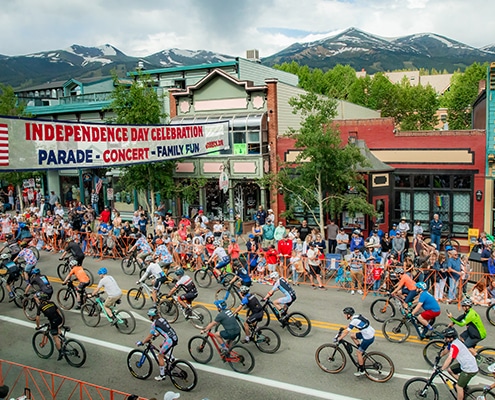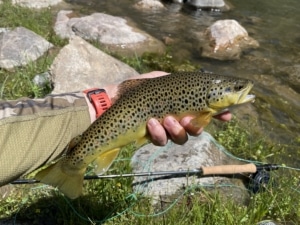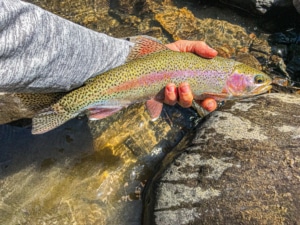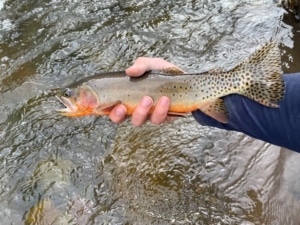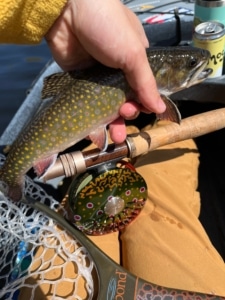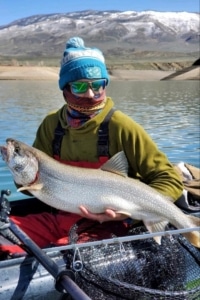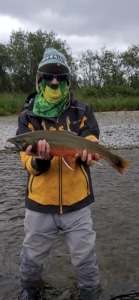Nothing says summer in Colorado like fly fishing! With our many rivers, lakes, and waterways brimming with trout, Breckenridge is the perfect place to get your feet wet. Whether you are an expert, beginner, or just looking for a new adventure, fly fishing is a great way to spend the day outdoors. Check out these tips for fishing in the area- what to pack, where to go, and local fly shops that can help you along the way!
Looking to book a guided trip? Call or stop by the concierge for a BGV owner discount!
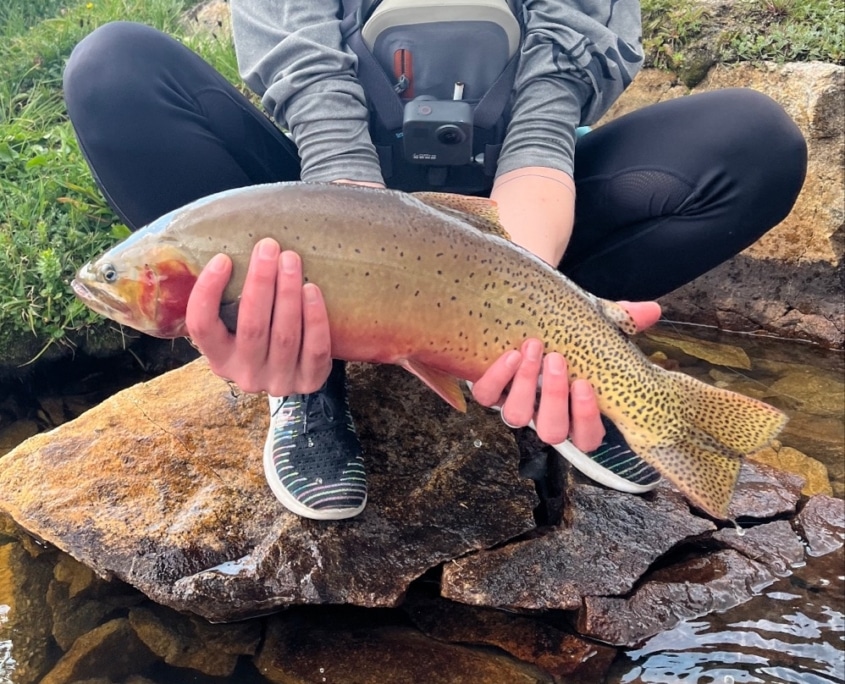
What You’ll Need
If you plan on fishing in Colorado, you must have a Colorado Fishing License. Fishing licenses can be purchased online, over the phone at 1.800.244.5613, or at a retail or Colorado Parks & Wildlife location.
Click here for fishing season dates and license fees!
The bread and butter of fly fishing!
Choosing the right fly rod and reel can feel daunting, especially for beginners. Head to a fly shop if you have questions! They will be sure to set you up for success and take into consideration where you’ll be fishing, what you’ll be fishing for, and your budget. These are the general recommendations for beginners:
- Medium-action fly rods are the most versatile and will be forgiving to learn on.
- Rod should be 8.5-9 feet in length for beginners.
- Weight for trout fishing should be 4, 5, or 6-weight. 5-weight will be most versatile.
- Fly rod weight = fly line weight = fly reel weight.
- Look for single retrieve fly reel for freshwater fly fishing.
- Look for gear priced in the mid-range.
If you plan on traveling with your rod, consider a travel rod that can break down into four or more pieces for easy transport. Most rods will have this capability. Some good brands to look for include: Cabela’s, Orvis, Sage, G. Loomis, Winston, Redington, Fenwick, Moonshine, Scott & St. Croix.
Aren’t ready to take the plunge and purchase your own gear? No problem! Fly shops offer gear rentals on rods, reels, boots, waders, and more!
Our mountain waters are cold. Really, really cold. If you plan to explore beyond the shoreline, you’ll likely want to have boots and waders!
What to look for in waders:
- Breathable- gore-tex, dri-plus, or synthetic materials allow moisture and perspiration to escape while preventing outside water from getting in. Avoid nylon or rubber waders.
- Stockingfoot waders are more versatile than bootfoot.
- Waders should be lightweight. If you are fishing in the summer months, insulated waders are unnecessary.
- Look for brands such as Patagonia, Orvis, Cabela’s, Simms, or Redington.
What to look for in boots:
- Lightweight- under four pounds is ideal.
- Rubber sole (not felt)
- Quick-draining
- Lacing System
- Ankle Support
Pack your fly vest or bag with everything you’ll need to make the catch!
- Line
- Flies- dry, wet, streamers
- Fly box
- Leaders
- Tippets
- Nippers
- Midges
- Forceps
- Indicators
- Net
Be sure you are prepared for our mountain environment with the correct clothing and sun protection!
- Base and mid-layers
- Rain jacket
- Polarized sunglasses
- Sun-protecting hat
- Sunscreen
- Lip balm with SPF
- Waterproof phone case
Time flies when you’re having fun! Bring enough food and water to keep you energized and hydrated during your day on the water.
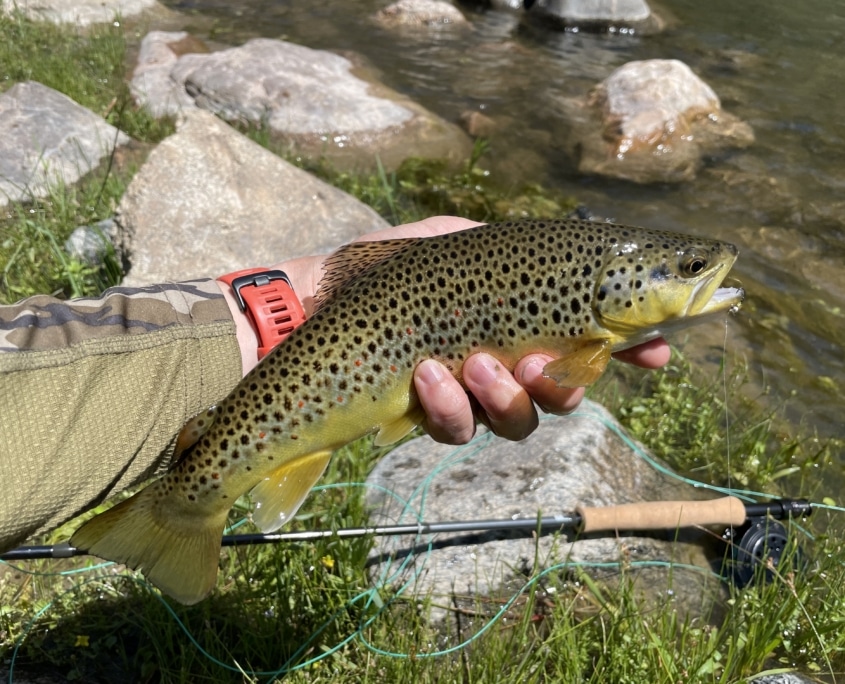
Fly Shops & Guiding Services
Breckenridge Outfitters
- Location: 101 N. Main St. #B, Breckenridge, CO 80424
- Fishing Supplies
- Gear Rental
- Trips and Packages
- Educational Opportunities
Mountain Angler
- Location: 311 S. Main St., Breckenridge, CO 80424
- Fishing Supplies
- Gear Rental
- Guide Service
- Private Water
Trouts Fly Fishing
- Location: 309 B East Main St., Frisco, CO 80443
- Fishing Supplies
- Gear Rentals
- Guided Trips
- Community Events
The Colorado Angler
- Location: 249 Summit Place, Silverthorne, CO 80498
- Fishing Supplies
- Guide Service
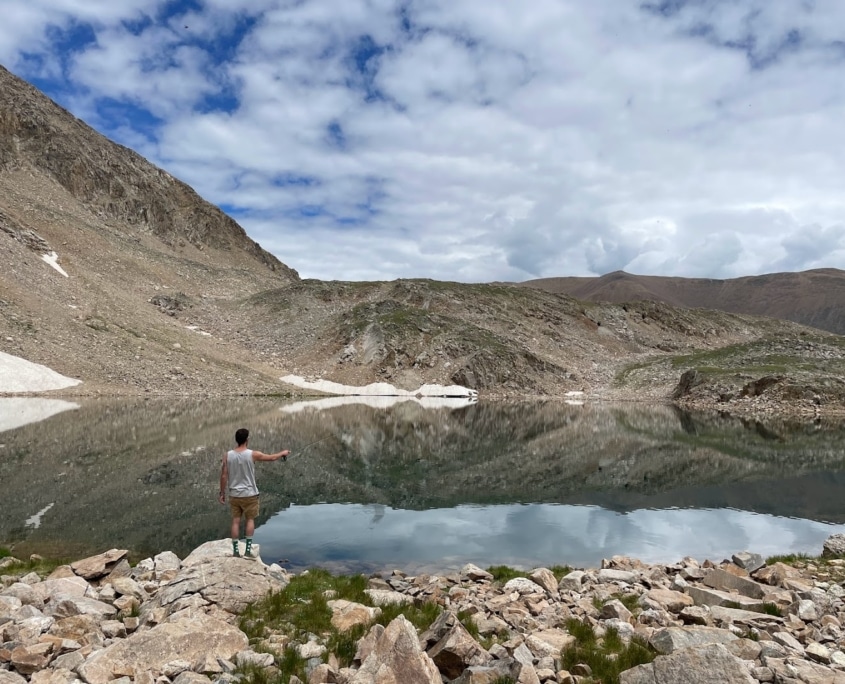
Where To Go
- Blue River
- Colorado River
- Snake River
- South Platte River
- Muddy Creek
- Tenmile Creek
- Arkansas River
- Lake Emma
- Mohawk Lakes
- Montgomery Reservoir
- Lake Dillon
- Cataract Lake
- Clinton Reservoir
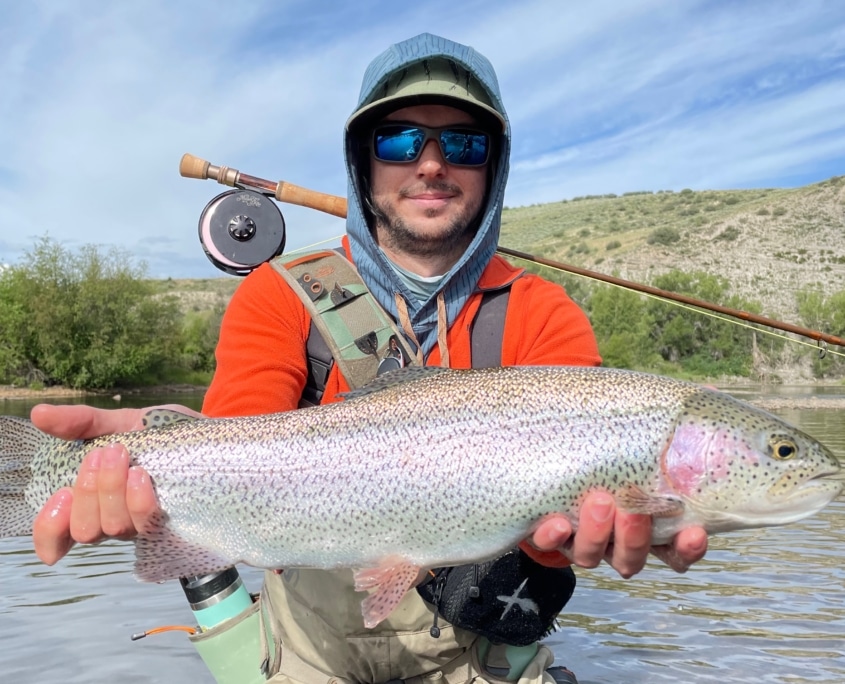
Species of Fish
Brown trout are a species that has been widely introduced across much of the world, having been introduced to the US from Germany in 1883. Brown trout are medium-sized fish with brown-olive bodies. They are covered in dark spots and surrounded by a lighter halo. They have a diet of larvae, pupae, insects, invertebrates, frogs, and more.
Rainbow trout grow to approximately 20-30 inches in length and weigh about eight pounds. As their name suggests, rainbow trout are very colorful! Depending on their environment, rainbow trout can be blue-green or yellow-green and have a pink streak down their side. They are also speckled with black spots. Rainbow trout thrive in the cold water rivers, streams, and lakes of Colorado and eat small insects, crustaceans, and small fish.
There are several species of cutthroat trout that make their home in our beautiful rivers. The three native species are Colorado River Cutthroat, Greenback Cutthroat, and Rio Grande Cutthroat. These species can all be distinguished by the distinctive red marking along their “throat” as well as spotting along their body, concentrated at the tail. These species can be found in high lakes, streams, and rivers.
This cold-water fish species was introduced to the Lake Dillon Reservoir in 1990. They are generally greenish-brown with light spots and a lighter belly, but their appearance can vary depending on environmental conditions. In 2017, the state record for the largest arctic char was caught by a woman on Lake Dillon! Read more about the story here.
Related Articles
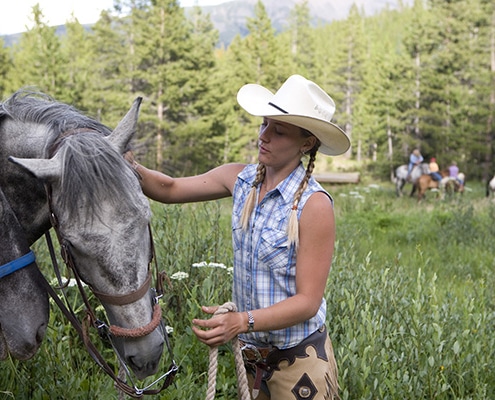
Breckenridge Horseback Riding
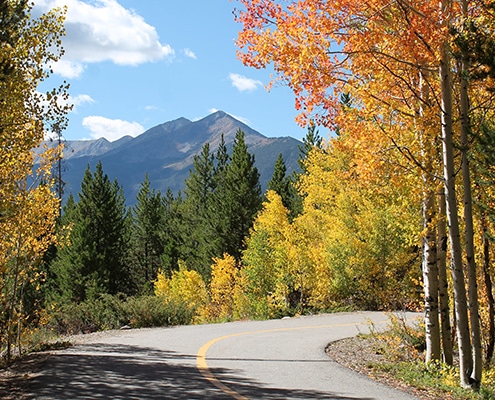
Leaf Peeping 101: Best Hikes, Bikes, and Drives
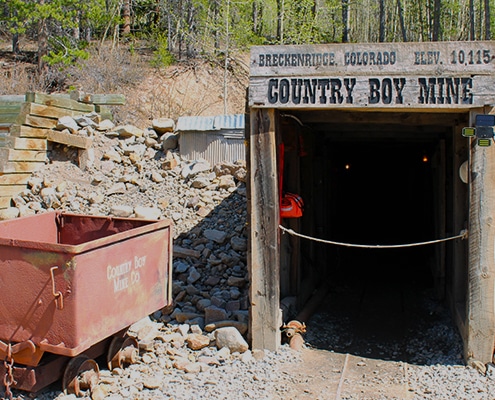
Country Boy Mine
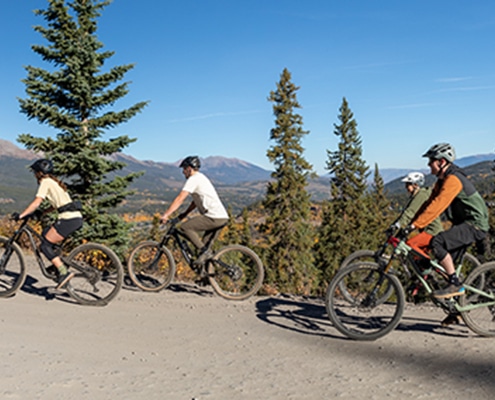
BreckenRide: Mountain Biking Adventure Guide
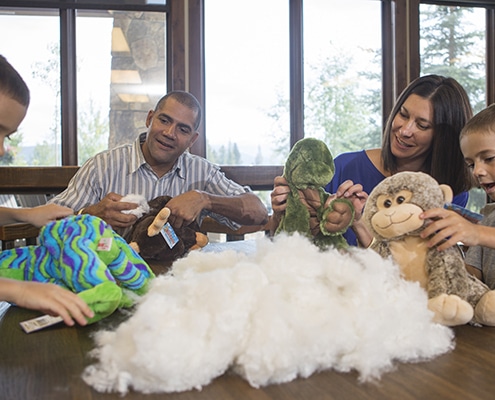
Top 10 Kid-Friendly Indoor Activities
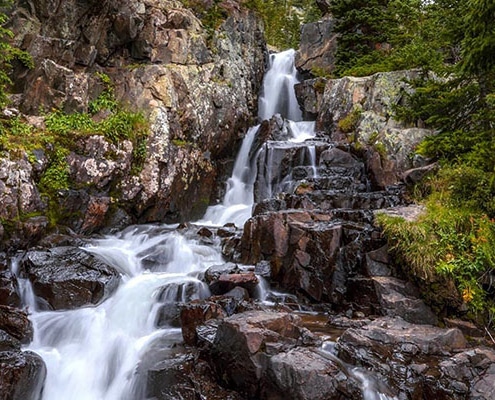
Breckenridge Cascades: A Guide to Waterfall Hikes
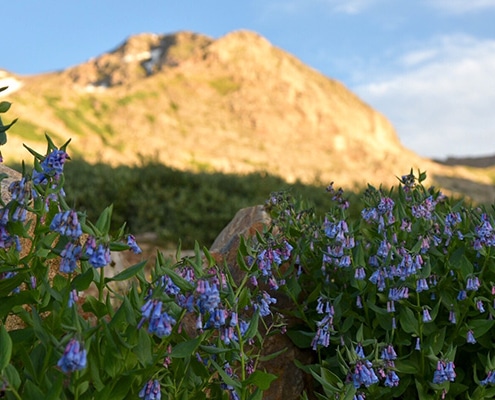
Breckenridge Blooms
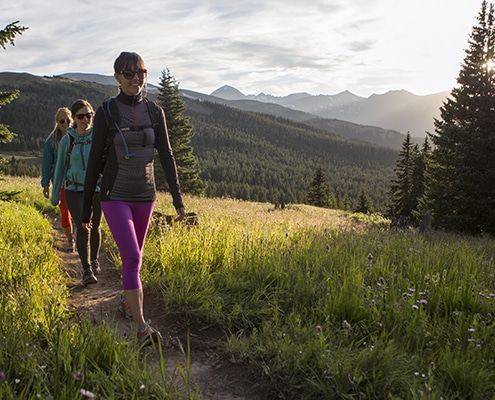
Summer Hiking Essentials
